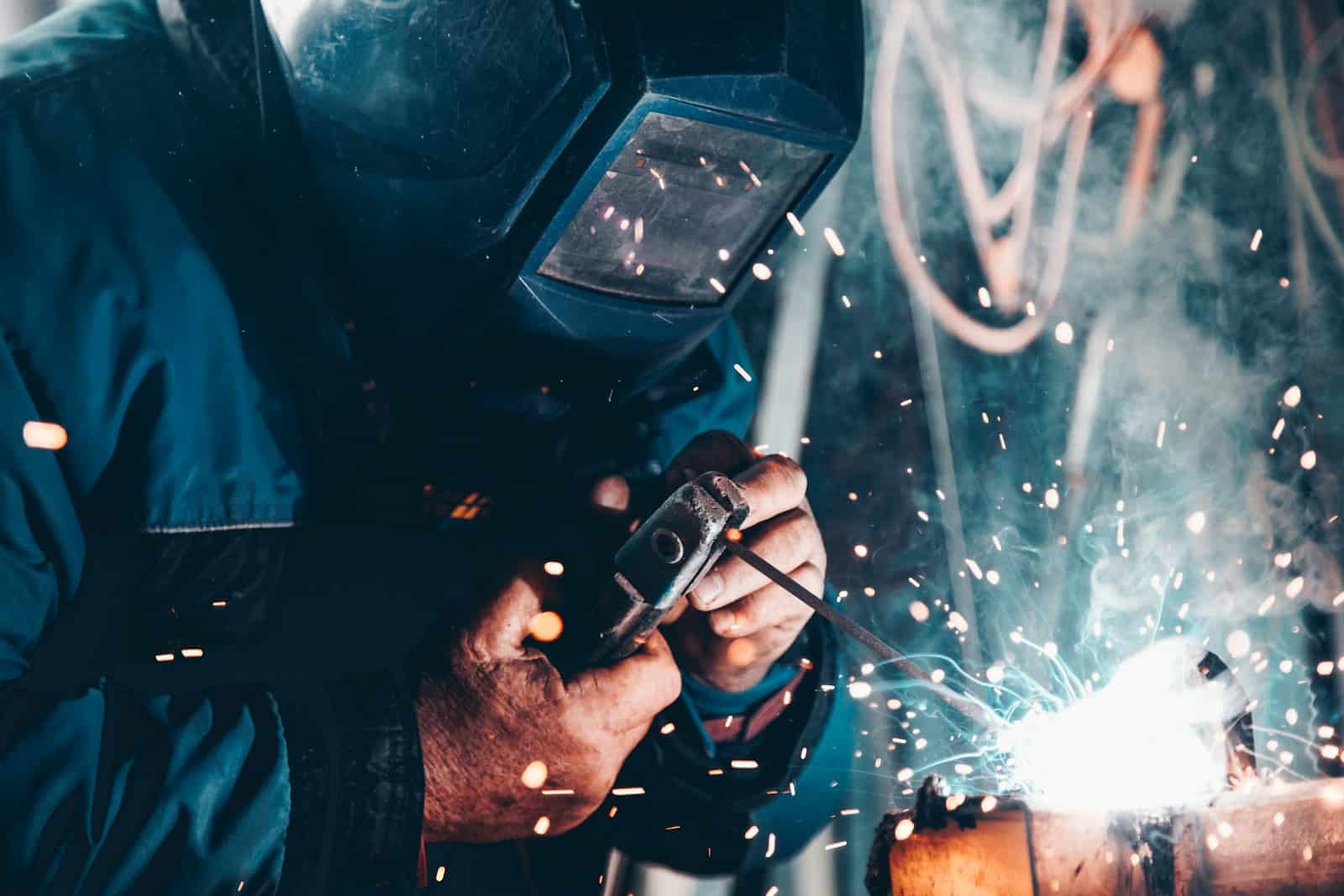As a former industrial engineer turned lean management consultant, I can tell you that Kaizen can make a significant impact on environmental efforts. Kaizen, the Japanese concept of continuous improvement, isn’t just for the shop floor. It’s a valuable strategy for addressing environmental issues. In this article, I’ll explain how Kaizen can minimize waste, save resources, and make your organization more sustainable.
Understanding Kaizen in Environmental Management

Kaizen is a Japanese word that translates to “continuous improvement.” It’s a philosophy I’ve used in my career in manufacturing and consulting. In environmental management, Kaizen is all about making continuous, small improvements to minimize environmental impact.
At its core, Kaizen is about removing waste and improving quality and efficiency. Applying this to environmental sustainability helps businesses reduce their environmental footprint and often improve costs.
The main advantages of implementing environmental Kaizen are:
- Less resource usage
- Less waste generated
- Better energy efficiency
- Better compliance with regulations
- Cost savings from reduced waste and energy usage
Many people incorrectly believe Kaizen requires massive changes or expensive technology. However, Kaizen is really about making continuous, incremental improvements. I’ve witnessed the power of Kaizen in environmental strategies to make an impact. For example, in one manufacturing facility, we made a series of small process changes (many of them at essentially no cost) that reduced water use by 15%.
This is why many people think Kaizen is sustainable environmental management. Unlike one-time initiatives, Kaizen builds a culture of continuous improvement. Employees at all levels are empowered to make changes in their environment and to their job that will make the company more sustainable.
In my experience, getting environmental Kaizen right requires commitment from leadership and engagement from employees. It’s not a directive from the top to the bottom of the organization, but it’s collaborative to figure out and implement the right solution.
Implementing Environmental Kaizen: A Step-by-Step Approach
To apply environmental Kaizen, start by identifying waste and inefficiency in your current processes. Where are you using more resources than you need? Where are you creating waste that isn’t necessary?
Then, establish environmental goals. These should be specific, measurable, and in line with your broader sustainability goals as an organization. For example, you might set a goal to reduce energy consumption by 10% over the next year.
Create cross-functional teams to address environmental issues. Involve people from various departments to gain different perspectives. I’ve found that the best ideas often come from the people doing the work on the front lines.
Kaizen events are the core of the process. These are dedicated improvement sessions where you:
- Evaluate the current process
- Identify improvement opportunities
- Create and implement solutions
- Measure the results
After each Kaizen event, measure the results and adjust your approach accordingly. Then, set new goals.
Finally, standardize the improvements that work and ensure they are sustained. This step is critical to long-term success. Many organizations take three steps forward and then two steps back if you don’t hold the gains you’ve made. Regular audits and people witnessing the behavior can ensure you sustain improvements.
Remember, Kaizen is about continuous improvement. You don’t need to be perfect, but you should be making progress toward more sustainable operations.
Tools and Techniques for Environmental Kaizen
Value Stream Mapping is an effective tool for visualizing environmental processes and identifying resource waste and inefficiency. I’ve personally used this tool to uncover hidden energy inefficiencies in manufacturing processes.
The 5S methodology is a framework designed to make processes more eco-friendly. Sort, Set in order, Shine, Standardize, and Sustain are all concepts you can use to eliminate waste and make resources more efficient.
Root Cause Analysis is the only way to solve environmental problems for good. Instead of treating the symptoms, find the root cause of the resource waste or pollution. This is the only way to create truly effective, long-term solutions.
The PDCA (Plan-Do-Check-Act) cycle is the foundation of Kaizen. In an environmental context, this is the best framework for approaching any resource waste problem and creating a continuous stream of small solutions. I’ve found this cycle to be especially helpful for implementing and refining new resource efficient initiatives.
Visual management makes it easy to track environmental KPIs and ensure everyone is aware of resource waste progress. Even a simple chart or dashboard can be a surprisingly powerful motivator to take the next step in making resources more efficient.
These tools aren’t just philosophical concepts. I’ve used each of them in various industries to deliver tangible results. For instance, a food processing plant used Root Cause Analysis to reduce water waste by 30% simply by identifying and solving small leaks throughout the facility.
Employee Involvement in Environmental Kaizen

Employee engagement is key to a successful environmental Kaizen event. After all, your team members are the ones with boots on the ground, and they’re often best positioned to identify improvement opportunities that management overlooks.
Therefore, make sure your employees are properly trained with the knowledge and skills to contribute. This doesn’t have to be anything fancy. I’ve seen very effective training programs just cover the basics of environmental awareness and some simple ways employees can make improvements.
Building a culture of continuous environmental improvement requires some investment of time and effort. You need employees to be receiving consistent messaging from leadership and feel recognized for their environmental contributions. Establishing a culture of continuous improvement is probably the most frequent challenge I see organizations face when trying to implement a Kaizen event.
Implementing a Kaizen event will be much easier if your employees already have some kind of a culture of continuous improvement. For example, does your company already do Lean, Six Sigma, or something such as Lean Daily Management? If so, your employees will already have the mindset of continuous improvement.
Consider implementing a reward and recognition system to further drive employee participation in environmental initiatives. This doesn’t even need to be a financial reward. Many businesses still find that other forms of recognition or allowing employees to lead the projects are motivating enough.
You’ll inevitably have some people resist changing the process. Expect it. Just be open about those concerns and explain how the process change benefits the company. If you dig your heels in here, just ask them to participate in the process with you. The last thing I’ll note is that you can probably make anything that an employee suggests work. Your only job is to create an environment employees feel empowered to improve.
Integrating Kaizen with Environmental Management Systems (EMS)
Kaizen principles are a great way to make ISO 14001 Environmental Management Systems more effective. While EMS is the framework, Kaizen is the methodology for continuous improvement.
By applying Kaizen to ISO 14001, you create a powerful synergy. This is because Kaizen is designed to support the continuous improvement process, which is the essence of the Plan-Do-Check-Act cycle of ISO 14001.
Kaizen is an excellent framework to drive continuous improvement to our environmental policies and procedures. It encourages us to continuously review and improve our environmental policies and procedures to better capture insights that we didn’t know or better address changes in the business.
Kaizen is also a great tool to proactively manage environmental risk. This process of thinking ahead and identifying potential issues before they become actual problems prevents environmental incidents and reduces environmental risks of regulation.
Another benefit that many people overlook is simplifying environmental documentation and reporting. By applying Kaizen to the environmental policy and procedure framework, you can simplify and improve the efficiency and effectiveness of those processes. I’ve seen companies reduce the time spent handling environmental reporting by 50% using Kaizen.
The main takeaway when looking at your EMS and an opportunity for improvement, however, is the framework we should be improving with Kaizen.
Case Studies: Environmental Kaizen Success Stories
Here are a few real-world examples of environmental Kaizen. These examples illustrate how making small, continuous improvements can have a big impact.
A furniture manufacturer, Apollo Hardwoods, applied Kaizen to reduce resource usage:
- 50% less water
- 30% fewer chemicals
- 20% more energy efficient
These savings were the result of a collection of small improvements identified and made by employees over the course of a few years.
General Motors used Kaizen to reduce hazardous waste and water consumption, as one example. At one plant, they cut hazardous waste by 60% and water usage by 35% through a combination of process improvements and ideas from employees.
More compelling examples of success from other industries include:
- A hospital that cut energy consumption by 15% through a single Kaizen event focused on lighting and the HVAC system
- A food processing plant that cut waste to landfill by 40% through improvements in how they sorted and recycled materials
The key takeaways from these examples are:
- Many small improvements add up to a big result.
- Involving employees in idea generation is critical.
- Making many small improvements over time is far more effective than a one-time project.
Here’s a simple table summarizing the results of some environmental Kaizen events:
| Company | Area of Focus | Improvement |
|---|---|---|
| Apollo Hardwoods | Water | 50% |
| General Motors | Hazardous waste | 60% |
| Hospital | Energy | 15% |
| Food processing plant | Waste | 40% |
This data clearly demonstrates that Kaizen can create substantial environmental improvements in many different industries.
Key Performance Indicators for Environmental Kaizen

It’s important to define relevant environmental KPIs that you can use to track progress from your Kaizen events. These KPIs should tie back to your broader environmental goals and be relatively easy to measure.
Energy usage and efficiency metrics are common KPIs that factories will track. They will monitor total energy usage, and you may find energy used per unit of production or service a helpful efficiency metric. This will allow you to still see improvement even if you’re producing more products or services.
Waste reduction and recycling KPIs can track progress from your Kaizen events to reduce the environmental impact. You might track total waste produced, waste diverted from a landfill, and recycling rates.
Water usage and conservation metrics are starting to become more common. Factories will track total water usage and then look for opportunities to reuse water or reduce water usage.
Carbon footprint and emissions reduction is a broader KPI to track environmental impact. This might include direct emissions (if any) and indirect emissions from energy usage or transportation.
One trick I’ve seen work well is to create visual displays of each of these KPIs. It’s a powerful motivator to keep everyone focused on improving the factory’s environmental performance.
Just remember to regularly review and potentially update your KPIs. As you start to make progress, you will also likely need to update your KPIs or add new ones to keep making progress.
And don’t forget to celebrate the wins. If you hit one of your KPIs, make sure everyone in the factory knows about it. This helps reinforce the value of the Kaizen events and encourages more participation in the future.
Overcoming Challenges in Environmental Kaizen Implementation
Environmental Kaizen isn’t always a walk in the park, and you’ll likely face challenges along the way. Identifying these challenges in advance can help you proactively solve them.
Balancing short-term costs with long-term environmental benefits is a common challenge. Some of the improvements you implement may require an upfront investment. Just be sure to consider the entire lifecycle costs and benefits of these environmental improvements.
Ensuring management commitment is also a key consideration. If management doesn’t buy into your environmental Kaizen initiatives, it’s game over. Even the best programs I’ve seen established fell flat on their face when leadership’s focus shifted elsewhere.
Maintaining momentum is also a challenge after you’ve already achieved your initial “quick wins” for environmental Kaizen. While it can be a challenge, you can sustain momentum through regular Kaizen events, ongoing training, and consistent communication.
Adapting the Kaizen methodology to the specific environmental context you’re working in can be another challenge. What works in a manufacturing facility won’t necessarily work in an office environment or service industry.
In my experience, the solution to all of these challenges is to simply persist. Keep moving forward, learn from your setbacks, and celebrate progress, no matter how small it may seem.
Just remember, the purpose of Kaizen is continuous improvement, not perfection. Each small improvement is a step in the right direction towards a more sustainable future. To help guide your continuous improvement efforts, consider developing a kaizen roadmap that outlines your long-term goals and the steps needed to achieve them.
Wrapping Up
Environmental Kaizen is an excellent strategy for sustainable business operations. It essentially marries continuous improvement with environmental sustainability, and the result is a win-win. If you use this method, you’ll eliminate waste, save money, and improve efficiency. The trick is to get your entire team involved, apply specific solutions, and ensure it fits within management systems already in place. After all, little steps ultimately make a big difference. You have the ability to contribute to significant change. Get started on your environmental Kaizen journey today.






